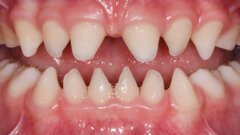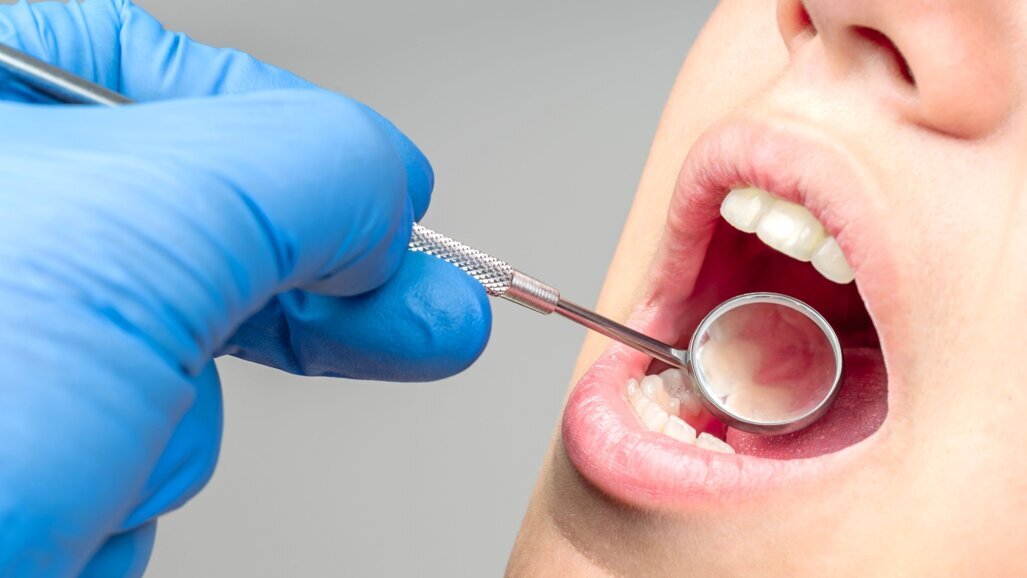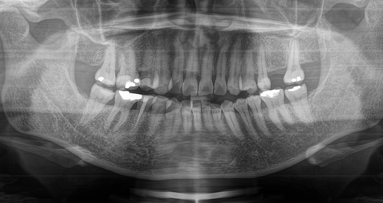PHILADELPHIA, US: Periodontitis is one of the world’s most prevalent health conditions, affecting between 20% and 50% of the global population—roughly 64 million people in the US alone. A new study from Penn Dental Medicine in Philadelphia has proposed that tracking certain proteins in saliva could provide an accessible way to monitor the progression of periodontal disease, offering potential benefits for both dentists and patients.
Led by Dr Flavia Teles, an associate professor in the Department of Basic and Translational Sciences at the dental school, the research followed over 400 patients for up to 18 months. The study found that individuals with periodontitis progression had notably elevated levels of nine inflammation-related signalling proteins in their saliva compared with those whose condition remained stable.
“One can imagine a saliva test kit, based on such findings, that dentists could use and even periodontitis patients could use at home—it could be a very useful personalised-dentistry tool for assessing risk and tailoring care delivery,” said Dr Teles in a university press release.
Despite its prevalence, predicting the transition from mild to severe periodontitis has proved challenging. Prior studies attempting to use molecular markers from saliva or blood have faced limitations, such as small sample sizes and single time point measurements rather than ongoing monitoring. Dr Teles and her co-researchers designed their study to avoid these issues.
The researchers enrolled 302 patients with early to severe periodontitis, along with 113 individuals without signs of the disease. The participants underwent detailed periodontal assessments every two months for a year, during which saliva and blood samples were collected and analysed for inflammatory proteins. Those with periodontitis received standard non-surgical therapy and were re-evaluated three and six months after treatment.
The patients with the most significant disease progression—defined as three or more sites with loss of clinical attachment—exhibited higher salivary levels of inflammatory markers such as interferon-gamma, interleukin-6, vascular endothelial growth factor, interleukin-1 beta and matrix metalloproteinase-8. These biomarkers decreased after treatment. In contrast, inflammatory protein levels in blood samples did not strongly correlate with disease progression, although some, including matrix metalloproteinase-8, matrix metalloproteinase-9 and C-reactive protein, showed declines after treatment.
The findings suggest that monitoring inflammation-related proteins in saliva over time could help both patients and clinicians assess periodontitis risk and treatment efficacy. While blood biomarkers may have a secondary role in evaluating treatment outcomes, saliva appears to be a more reliable indicator of disease progression.
Building on these insights, Dr Teles and her team are now analysing bacterial species and metabolites from the same patient samples to explore additional markers of disease progression or stability. “We are also using artificial intelligence to analyse broader sets of clinical and laboratory data,” Dr Teles explained. “Our hope is that, through this data analysis, we can further refine this approach and provide more tailored and accessible oral care.”
The article, titled “Salivary and serum inflammatory biomarkers during periodontitis progression and after treatment” , was published in the December 2024 issue of the Journal of Clinical Periodontology.
Topics:
Tags:
VIENNA, Austria: On this World Diabetes Day, the European Federation of Periodontology (EFP) calls attention to the growing body of scientific evidence that...
A 48-year-old female patient was referred to our clinic owing to a defective amalgam restoration on tooth #46. She had spontaneous acute pain in the area of...
KUOPIO, Finland: Stroke is the second leading cause of death globally, and periodontitis has been shown to be associated with an increased risk of ischemic ...
HIGASHIHIROSHIMA, Japan: Although periodontitis is not currently considered a modifiable risk factor for atrial fibrillation (AF), a recent study has ...
NEW YORK, US: Studies have repeatedly shown that oral bacteria can contribute to periodontal disease. Now, researchers have sought to examine whether there ...
Live webinar
Wed. 14 January 2026
12:00 pm EST (New York)
Dr. Théo Laplane, Dr. Robert Gottlander DDS
Live webinar
Fri. 16 January 2026
12:00 pm EST (New York)
Live webinar
Mon. 19 January 2026
1:00 pm EST (New York)
Philipp Kopp, Michael Seeber
Live webinar
Thu. 22 January 2026
9:00 am EST (New York)
Prof. Judith Jones D.D.S; M.P.H., Prof. Kakuhiro Fukai D.D.S., Ph.D, Dr. Bathsheba (Bethy) Turton
Live webinar
Thu. 22 January 2026
2:00 pm EST (New York)
Dr. Nicola M. Grande DDS, PhD
Live webinar
Wed. 28 January 2026
8:00 am EST (New York)
Live webinar
Wed. 28 January 2026
11:00 am EST (New York)
Prof. Dr. Jan-Frederik Güth



 Austria / Österreich
Austria / Österreich
 Bosnia and Herzegovina / Босна и Херцеговина
Bosnia and Herzegovina / Босна и Херцеговина
 Bulgaria / България
Bulgaria / България
 Croatia / Hrvatska
Croatia / Hrvatska
 Czech Republic & Slovakia / Česká republika & Slovensko
Czech Republic & Slovakia / Česká republika & Slovensko
 France / France
France / France
 Germany / Deutschland
Germany / Deutschland
 Greece / ΕΛΛΑΔΑ
Greece / ΕΛΛΑΔΑ
 Hungary / Hungary
Hungary / Hungary
 Italy / Italia
Italy / Italia
 Netherlands / Nederland
Netherlands / Nederland
 Nordic / Nordic
Nordic / Nordic
 Poland / Polska
Poland / Polska
 Portugal / Portugal
Portugal / Portugal
 Romania & Moldova / România & Moldova
Romania & Moldova / România & Moldova
 Slovenia / Slovenija
Slovenia / Slovenija
 Serbia & Montenegro / Србија и Црна Гора
Serbia & Montenegro / Србија и Црна Гора
 Spain / España
Spain / España
 Switzerland / Schweiz
Switzerland / Schweiz
 Turkey / Türkiye
Turkey / Türkiye
 UK & Ireland / UK & Ireland
UK & Ireland / UK & Ireland
 Brazil / Brasil
Brazil / Brasil
 Canada / Canada
Canada / Canada
 Latin America / Latinoamérica
Latin America / Latinoamérica
 USA / USA
USA / USA
 China / 中国
China / 中国
 India / भारत गणराज्य
India / भारत गणराज्य
 Pakistan / Pākistān
Pakistan / Pākistān
 Vietnam / Việt Nam
Vietnam / Việt Nam
 ASEAN / ASEAN
ASEAN / ASEAN
 Israel / מְדִינַת יִשְׂרָאֵל
Israel / מְדִינַת יִשְׂרָאֵל
 Algeria, Morocco & Tunisia / الجزائر والمغرب وتونس
Algeria, Morocco & Tunisia / الجزائر والمغرب وتونس
 Middle East / Middle East
Middle East / Middle East











































To post a reply please login or register